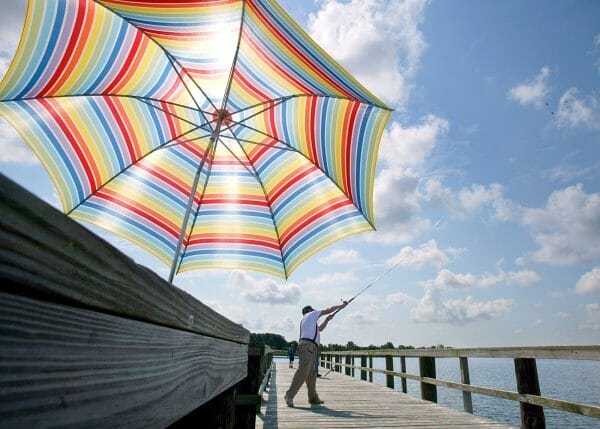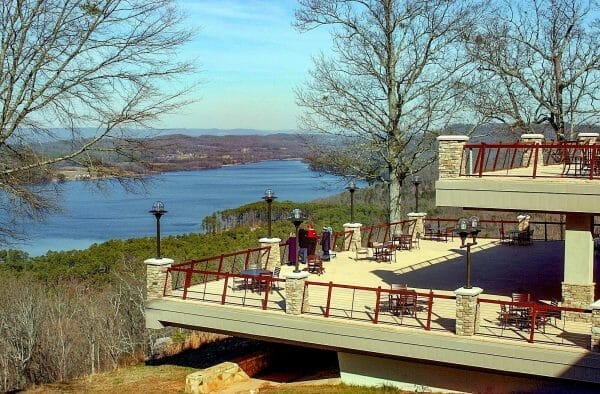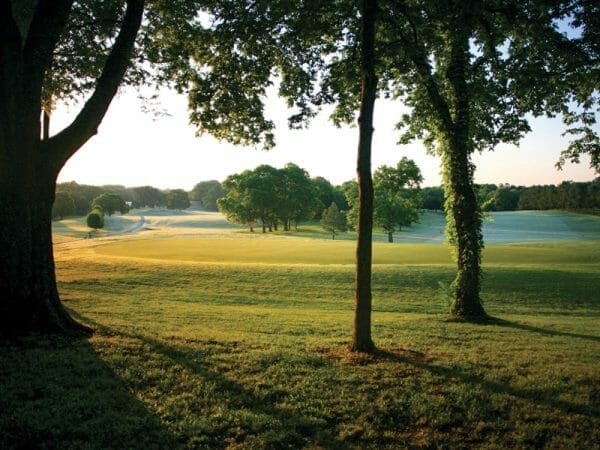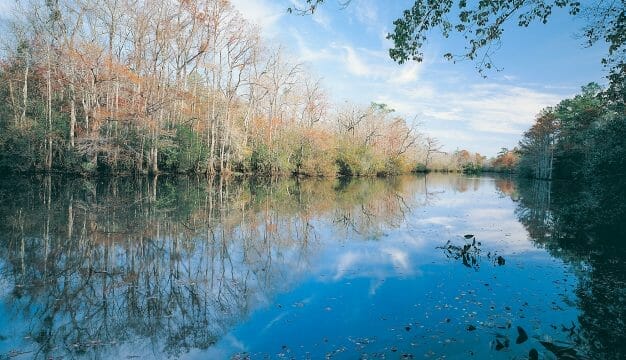State Parks of Alabama
Alabama’s state parks provide many thousands of visitors each year with the opportunity to share the natural, cultural, and historical assets of the state. From a single park in 1930, the system expanded to the current 25 parks encompassing almost 50,000 acres that are vital to conserving the environment and that provide the public with a variety of recreational choices. Not all of the parks center on nature and recreation, however. Three of them preserve sites that played significant roles in the state’s history. Alabama state parks have won 11 TripAdvisor Awards of Excellence and have hosted more than 5 million visitors annually.
 Stalagmite Forest
The history of Alabama’s state parks began in 1927, when the Alabama legislature passed the State Land Act, which provided for the development and operation of state parks and the administration of other state lands by the State Commission of Forestry. The commission then formed the Bureau of Parks and Recreation to manage all state park lands. At its establishment, the bureau actually had no parks to manage, but acquisition of land for parks began soon thereafter. Procurement began slowly but then accelerated after 1930, at which time only Cheaha State Park existed. By the end of 1933, the bureau had created 11 more parks. The goal in acquiring and establishing these first parks was to preserve wild areas and provide recreational opportunities. In 1933, the State Commission of Forestry secured the resources of the Civilian Conservation Corps (CCC) through the federal government for various park improvement projects, including construction of facilities and forest improvement efforts such as reseeding and fire control. The CCC facilities constituted the first state park infrastructure developments in Alabama.
Stalagmite Forest
The history of Alabama’s state parks began in 1927, when the Alabama legislature passed the State Land Act, which provided for the development and operation of state parks and the administration of other state lands by the State Commission of Forestry. The commission then formed the Bureau of Parks and Recreation to manage all state park lands. At its establishment, the bureau actually had no parks to manage, but acquisition of land for parks began soon thereafter. Procurement began slowly but then accelerated after 1930, at which time only Cheaha State Park existed. By the end of 1933, the bureau had created 11 more parks. The goal in acquiring and establishing these first parks was to preserve wild areas and provide recreational opportunities. In 1933, the State Commission of Forestry secured the resources of the Civilian Conservation Corps (CCC) through the federal government for various park improvement projects, including construction of facilities and forest improvement efforts such as reseeding and fire control. The CCC facilities constituted the first state park infrastructure developments in Alabama.
 Meaher State Park
The State Commission of Forestry managed the state parks until 1939, when the legislature passed the Department of Conservation Act and created the new Department of Conservation and abolished the State Commission of Forestry (it was re-established as a separate agency in 1969). The department then created the Division of State Parks, Monuments, and Historic Sites to oversee management of the park system, and the new Division of Forestry took over all forest-management programs. In 1942, the newly created Division of State Lands took over administration of state lands from the Division of Forestry.
Meaher State Park
The State Commission of Forestry managed the state parks until 1939, when the legislature passed the Department of Conservation Act and created the new Department of Conservation and abolished the State Commission of Forestry (it was re-established as a separate agency in 1969). The department then created the Division of State Parks, Monuments, and Historic Sites to oversee management of the park system, and the new Division of Forestry took over all forest-management programs. In 1942, the newly created Division of State Lands took over administration of state lands from the Division of Forestry.
The Department of Conservation changed its name to the Department of Conservation and Natural Resources in 1971 and added to its existing responsibilities the oversight of wildlife management areas, public fishing lakes, fish hatcheries, waterfowl refuges, and additional public lands. However, its original mission of managing the state parks remained its core responsibility. Today, the State Parks Division within the Department of Conservation and Natural Resources maintains and operates all state parks. The declared mission of the division is to acquire and preserve natural areas; to develop, furnish, operate, and maintain recreational facilities; and to extend the public’s knowledge of the state’s natural environment.
 Lake Guntersville Resort State Park
The Alabama Department of Conservation and Natural Resources receives no support from the state’s General Fund. Instead, state parks are funded through special revenue sources that include federal money, cigarette taxes, user and license fees, and mandated interest from endowments and federal regulations. Additionally, user-generated funds in the form of entrance, rental, lodging, golf, and other recreational fees support the parks. In 2016, the budget for the division was $45,328,890, $24 million of which was from park-generated revenues. The state park system employs approximately 800 people during peak season and approximately 600 workers during the off-season. The staff is aided by a large cohort of volunteers.
Lake Guntersville Resort State Park
The Alabama Department of Conservation and Natural Resources receives no support from the state’s General Fund. Instead, state parks are funded through special revenue sources that include federal money, cigarette taxes, user and license fees, and mandated interest from endowments and federal regulations. Additionally, user-generated funds in the form of entrance, rental, lodging, golf, and other recreational fees support the parks. In 2016, the budget for the division was $45,328,890, $24 million of which was from park-generated revenues. The state park system employs approximately 800 people during peak season and approximately 600 workers during the off-season. The staff is aided by a large cohort of volunteers.
 Joe Wheeler Golf Course
These funding sources provide a constant level of monies to operate and maintain the parks. However, in 2004, Hurricane Ivan and in 2005, Hurricane Katrina struck Gulf State Park, causing major damage to both the facilities and the park landscape. The storms devastated the park’s woodlands, blowing down trees and inundating lowland areas with saltwater, which continues to kill trees. Remediation efforts, including reforestation and prescribed burns to deal with the effects of these storms, made significant demands on the budget, but the impact may be reduced by the settlement of insurance claims. Additionally, the park’s beachfront lodge and inshore campgrounds and picnic areas were damaged or destroyed. A new pavilion replaced the destroyed structure, and plans to replace the lodge with a 350-room, $100 million luxury hotel and conference center are currently on hold pending resolution of legal issues. In 2015, budget shortfalls led to the closure of five Alabama parks—Bladon Springs, Chickasaw, Paul M. Grist, Roland Cooper, and Florala. All have reopened, but Chickasaw State Park is operated jointly with Marengo County, and Florala is now Florala City Park and operated by the city government.
Joe Wheeler Golf Course
These funding sources provide a constant level of monies to operate and maintain the parks. However, in 2004, Hurricane Ivan and in 2005, Hurricane Katrina struck Gulf State Park, causing major damage to both the facilities and the park landscape. The storms devastated the park’s woodlands, blowing down trees and inundating lowland areas with saltwater, which continues to kill trees. Remediation efforts, including reforestation and prescribed burns to deal with the effects of these storms, made significant demands on the budget, but the impact may be reduced by the settlement of insurance claims. Additionally, the park’s beachfront lodge and inshore campgrounds and picnic areas were damaged or destroyed. A new pavilion replaced the destroyed structure, and plans to replace the lodge with a 350-room, $100 million luxury hotel and conference center are currently on hold pending resolution of legal issues. In 2015, budget shortfalls led to the closure of five Alabama parks—Bladon Springs, Chickasaw, Paul M. Grist, Roland Cooper, and Florala. All have reopened, but Chickasaw State Park is operated jointly with Marengo County, and Florala is now Florala City Park and operated by the city government.
Acquisitions have continued over the years, and as a result the state now features a chain of 25 state parks from the mountains of the northeast to the beaches of the Gulf of Mexico in the south. Alabama’s state parks today encompass clear lakes, rugged mountain peaks, rushing rivers, lush forests, open meadows, ocean dunes, swamps, and limestone bluffs. In addition to protecting a variety of natural habitats, six of the parks—DeSoto, Cheaha, Gulf, Joe Wheeler, Lakepoint, and Lake Guntersville—have resort facilities that include lodges with full-service dining facilities. Joe Wheeler, Lake Guntersville, and Oak Mountain have nationally rated 18-hole golf courses. In addition, some parks offer marinas for boaters, tennis courts, swimming pools, chalets, and cabins.
Several state parks protect unique natural areas of the state:
- Brierfield Ironworks Historical State Park is located on 45 acres in Bibb County and preserves the site of a historic ironworks established during the Civil War.
- Buck’s Pocket State Park is nestled in the Appalachian foothills near Guntersville. The “pocket” is a secluded natural cove hemmed in by a horseshoe-shaped natural bluff.
- Cathedral Caverns, near Woodville, in Jackson County, houses magnificent underground rock formations. The cavern’s mouth is enormous—120 feet high and 30 feet wide—and its interior features massive natural limestone columns, stalagmites and stalactites, and a fossilized shark’s tooth embedded in the cavern’s ceiling.
- Cheaha State Park is located in northeast Alabama in the extreme southern reaches of the Appalachian foothills. Mt. Cheaha, the highest point in the state at 2,407 feet, offers dramatic views of the woodlands of the surrounding Talladega National Forest from its lodge.
- DeSoto State Park sits astride the backbone of Lookout Mountain in northeast Alabama and encompasses 3,502 acres of waterfalls, cliffs, and mountain overlooks. DeSoto Falls, Indian Falls, and Little River are nearby.
- Gulf State Park has two miles of white sand beaches, dunes, sparkling views of the Gulf of Mexico, and saltwater fishing. The park’s 6,150 acres also host an 18-hole golf course and a 900-acre freshwater lake. The beaches attract hundreds of shorebirds, including pelicans, terns, and seagulls, and alligators are abundant in the park’s lakes and wetlands.
- Historic Blakeley State Park encompasses 3,800 acres in Baldwin County on the Tensaw River and preserves the site of a significant Civil War battle. It also offers nature trails and boardwalks through forests and marshes.
- Monte Sano State Park overlooks the city of Huntsville. The park’s 20 miles of hiking trails and 14 miles of mountain-biking trails offer often stunning vistas of the city sitting in the valley below.
- Oak Mountain State Park, located just south of Birmingham, is Alabama’s largest state park, with just over 9,940 acres of rugged hills and forested valleys. The park houses the largest wildlife rehabilitation center in the state.
- Rickwood Caverns, near Warrior in Jefferson County, is a natural wonder with miles of underground passages. Eerie natural limestone formations, blind cave fish, and underground rivers greet visitors.
- Tannehill Ironworks State Park, in Jefferson County, is a 1,500-acre park devoted to the preservation and interpretation of one of the oldest industrial sites in the state. The furnace was established in 1830 and played a significant role in the Civil War.
The other parks are Bladon Springs, Blue Springs, Chewacla, Chickasaw, Frank Jackson, Joe Wheeler, Lake Guntersville, Lake Lurleen, Lakepoint, Meaher, Paul Grist, Roland Cooper, and Wind Creek. These parks provide opportunities for hiking, swimming, fishing, boating, and other outdoor recreation.
Further Reading
- Howard, Blair. State Parks of the South. Edison, N.J.: Hunter Publishing, 1994.
- Kangas, Race. Alabama State Parks Guide. Milwaukee, Wis.: Affordable Adventures, Inc., 1989.
- Wills, Kenneth M., and Lawrence J. Davenport. Exploring Wild Alabama: A Guide to the State’s Publicly Accessible Natural Areas. Tuscaloosa: University of Alabama Press, 2016.



